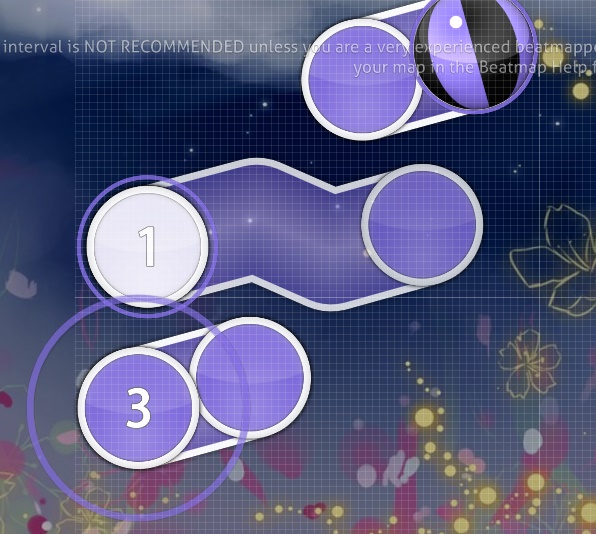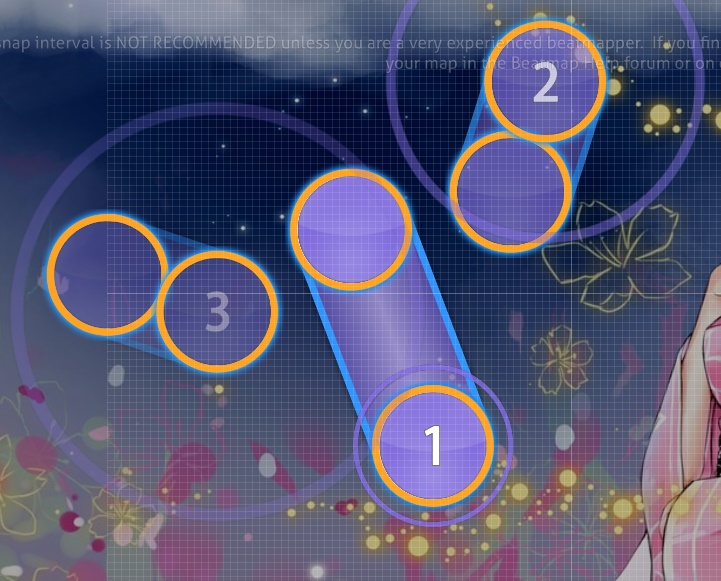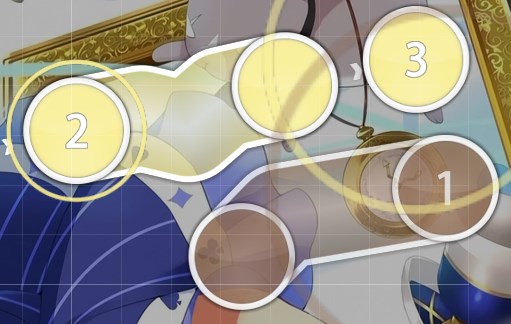So after having a good listen to Charles' podcast on mapping theory and stuff (btw check it out if you haven't yet it's on his userpage), I've been doing some thinking of my own.
One of the biggest questions I've wondered was;
After doing some thinking, I've concluded that it all boiled down to connecting the patterns we see in our maps to some common real life patterns. So, lets give some examples.
One of the biggest questions I've wondered was;
Why do some patterns look nice to us, and where did this meta originate from.That was always one thing that I've never understood. Why whenever I modded a map, and I pointed out whether a pattern looked bad - why did it look bad to me, and why was my suggestion better?
After doing some thinking, I've concluded that it all boiled down to connecting the patterns we see in our maps to some common real life patterns. So, lets give some examples.
Parallelism
It is very clear that many maps use parallel patterns. Here is one of the most common patterns that utilize this.

or, if we want to get more complicated, something like this.

It is very clear that many maps use parallel patterns. Here is one of the most common patterns that utilize this.
or, if we want to get more complicated, something like this.
Symmetry
This one is also very self-explanatory. Symmetry plays a big part in the development of the mapping meta, especially in the older times, where there were maps made of purely symmetrical patterns (Andrea is a great example of this). Even though we have moved on, there are still patterns that take from this concept.
Precisely things like this

As time went on, people began to work off that concept and started experimenting. An example is we may have started using different angles for the axis of symmetry.

This one is also very self-explanatory. Symmetry plays a big part in the development of the mapping meta, especially in the older times, where there were maps made of purely symmetrical patterns (Andrea is a great example of this). Even though we have moved on, there are still patterns that take from this concept.
Precisely things like this
As time went on, people began to work off that concept and started experimenting. An example is we may have started using different angles for the axis of symmetry.
Shapes
This element has been the key deciding factor for many of the jumps we use; stars, squares, triangles, etc
For example, star jumps are very common
(we all know what this looks like so I won't take an image for this)
But we have worked off that and created interesting things with sliders too.
(admittedly this is a pretty bad pattern, but you get the point lol)

This element has been the key deciding factor for many of the jumps we use; stars, squares, triangles, etc
For example, star jumps are very common
(we all know what this looks like so I won't take an image for this)
But we have worked off that and created interesting things with sliders too.
(admittedly this is a pretty bad pattern, but you get the point lol)
Spacing
This one is a bit of weird one, and I don't think many people use this, however, I believe equal visual distance between various objects make it look much more aesthetically pleasing. The easiest way to explain this is give good/bad examples.
-bad

Notice how circle 4 is very far away from the rest of the circles, which makes it look very out of place.
-good

It looks much better now that the visual distance between the objects look more even.
-bad

This is much more subjective, but there is an uneven density of objects around the right part (with the slider).
-good

Now it looks much better now that the objects are placed evenly around the slider.
This one is a bit of weird one, and I don't think many people use this, however, I believe equal visual distance between various objects make it look much more aesthetically pleasing. The easiest way to explain this is give good/bad examples.
-bad
Notice how circle 4 is very far away from the rest of the circles, which makes it look very out of place.
-good
It looks much better now that the visual distance between the objects look more even.
-bad
This is much more subjective, but there is an uneven density of objects around the right part (with the slider).
-good
Now it looks much better now that the objects are placed evenly around the slider.
Interlocking Placement (Fitting?)
Written by -Mo-
I believe that the reason blankets seem to 'look good' is the same reason why we seem to get satisfaction from things fitting perfectly into eachother, although I guess you could argue that every tangent of a circle in a blanket is parallel to the tangents of the slider. So yeah, a blanket (and other fitting patterns) does seem to be more applied versions of parallelism.
You can do a lot more than just blankets with this 'fitting' concept too:
Or I guess if you wanted to, you could call them advanced blankets.

Petit Rabbit's - No Poi! (nenpulse bootleg remix) (Skystar)

HoneyWorks - Hatsukoi no Ehon feat.Aida Miou(CV:Toyosaki Aki) (Guy)
You could then argue that regular shape patterns are just cases of rotational symmetry, for example your slider thing is just the same slider rotated about the same point 5*72 degrees. Furthermore, you could argue for the parallel case that there is a line of symmetry between the objects exactly inbetween them.
So perhaps all satisfying patterns are just different ways of applying symmetry?
Written by -Mo-
I believe that the reason blankets seem to 'look good' is the same reason why we seem to get satisfaction from things fitting perfectly into eachother, although I guess you could argue that every tangent of a circle in a blanket is parallel to the tangents of the slider. So yeah, a blanket (and other fitting patterns) does seem to be more applied versions of parallelism.
You can do a lot more than just blankets with this 'fitting' concept too:
Or I guess if you wanted to, you could call them advanced blankets.
Petit Rabbit's - No Poi! (nenpulse bootleg remix) (Skystar)
HoneyWorks - Hatsukoi no Ehon feat.Aida Miou(CV:Toyosaki Aki) (Guy)
You could then argue that regular shape patterns are just cases of rotational symmetry, for example your slider thing is just the same slider rotated about the same point 5*72 degrees. Furthermore, you could argue for the parallel case that there is a line of symmetry between the objects exactly inbetween them.
So perhaps all satisfying patterns are just different ways of applying symmetry?
And with these simple elements, people evolved the mapping meta. Kind of like how technology evolves. We start with simple elements, and then build on to that forming other concepts, and then we build off those concepts. Sort of like a flowchart.
Anyways, you are free to agree with me or not, but I just wanted to share my thoughts here.
Anyways, you are free to agree with me or not, but I just wanted to share my thoughts here.